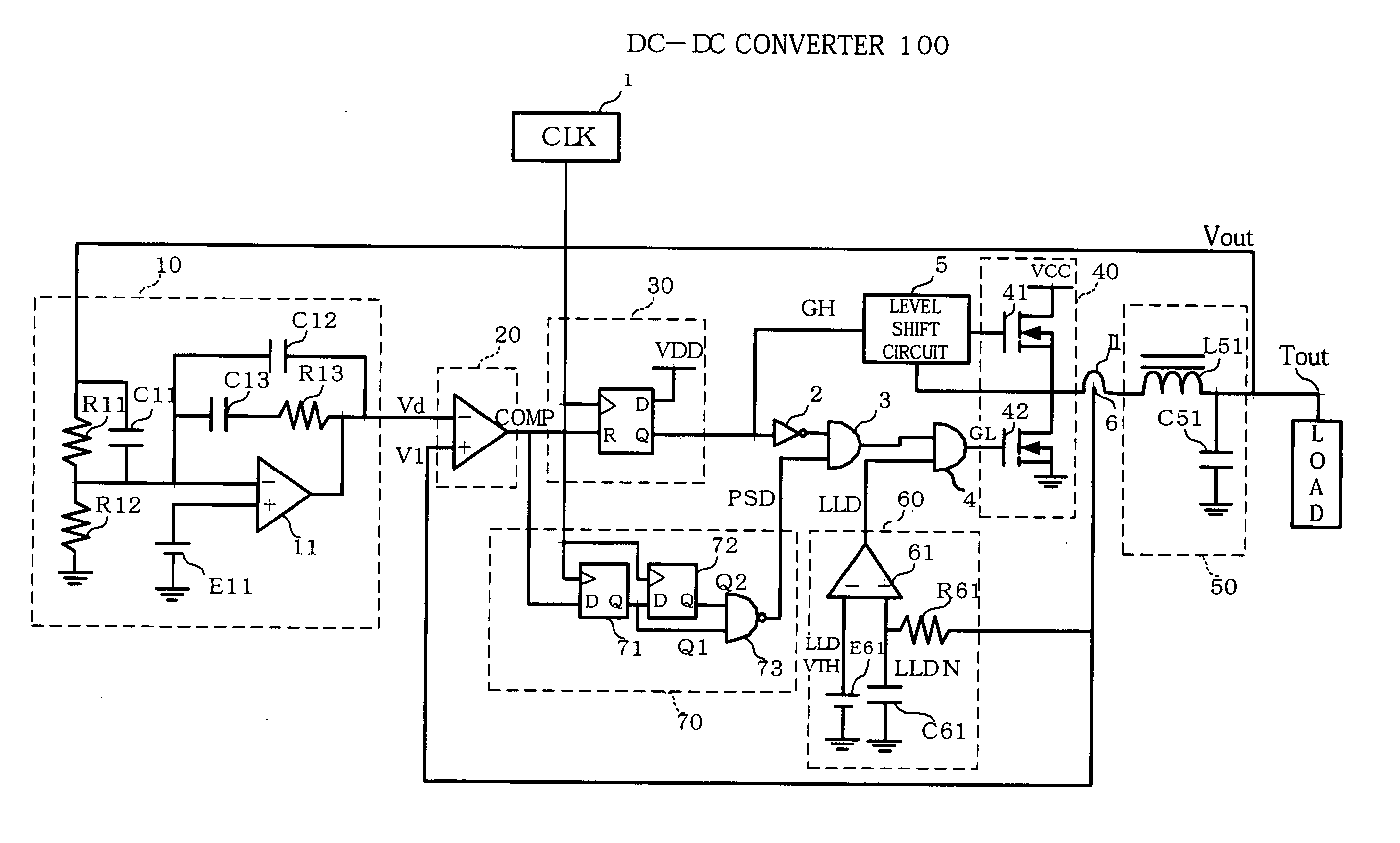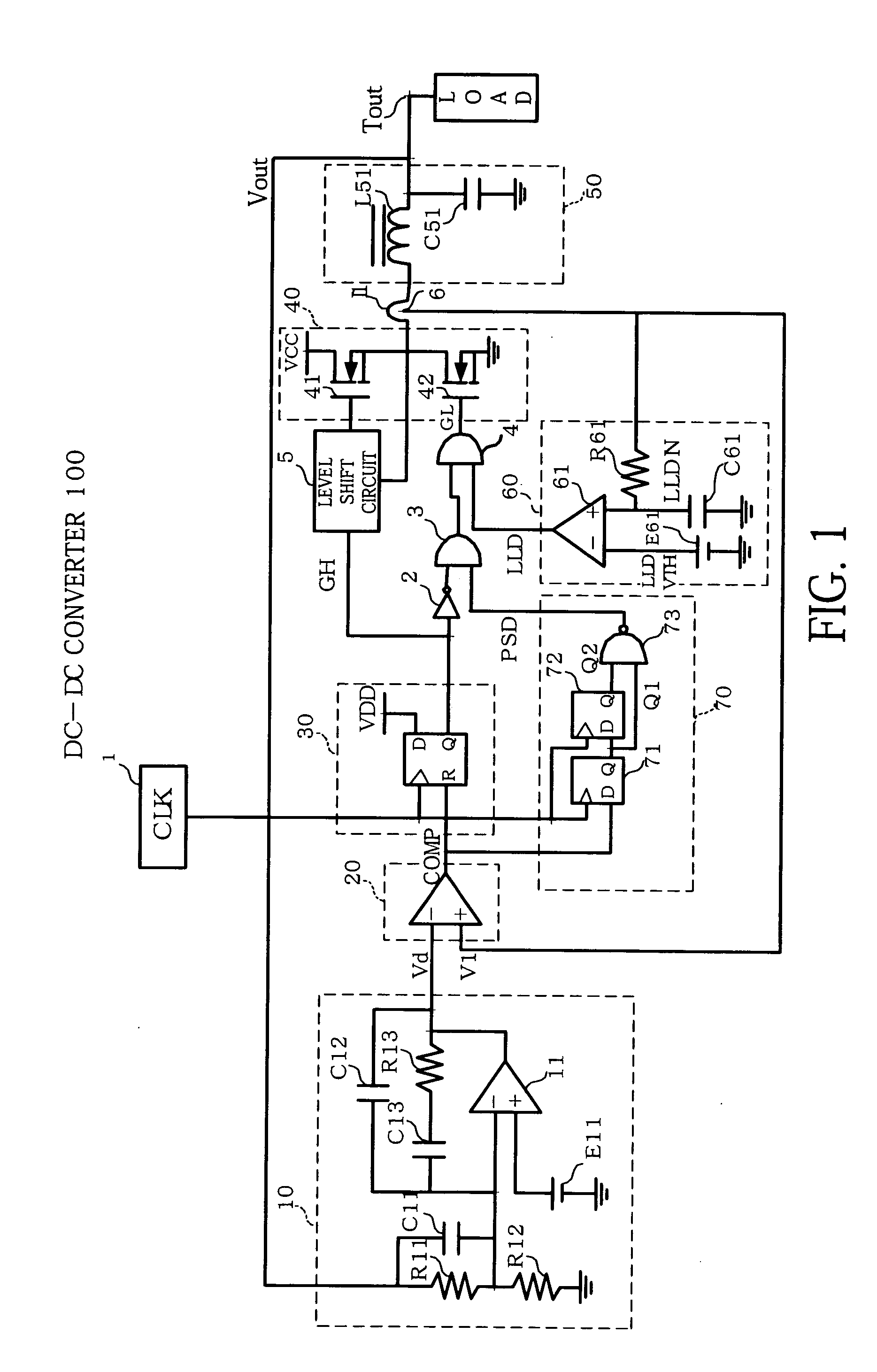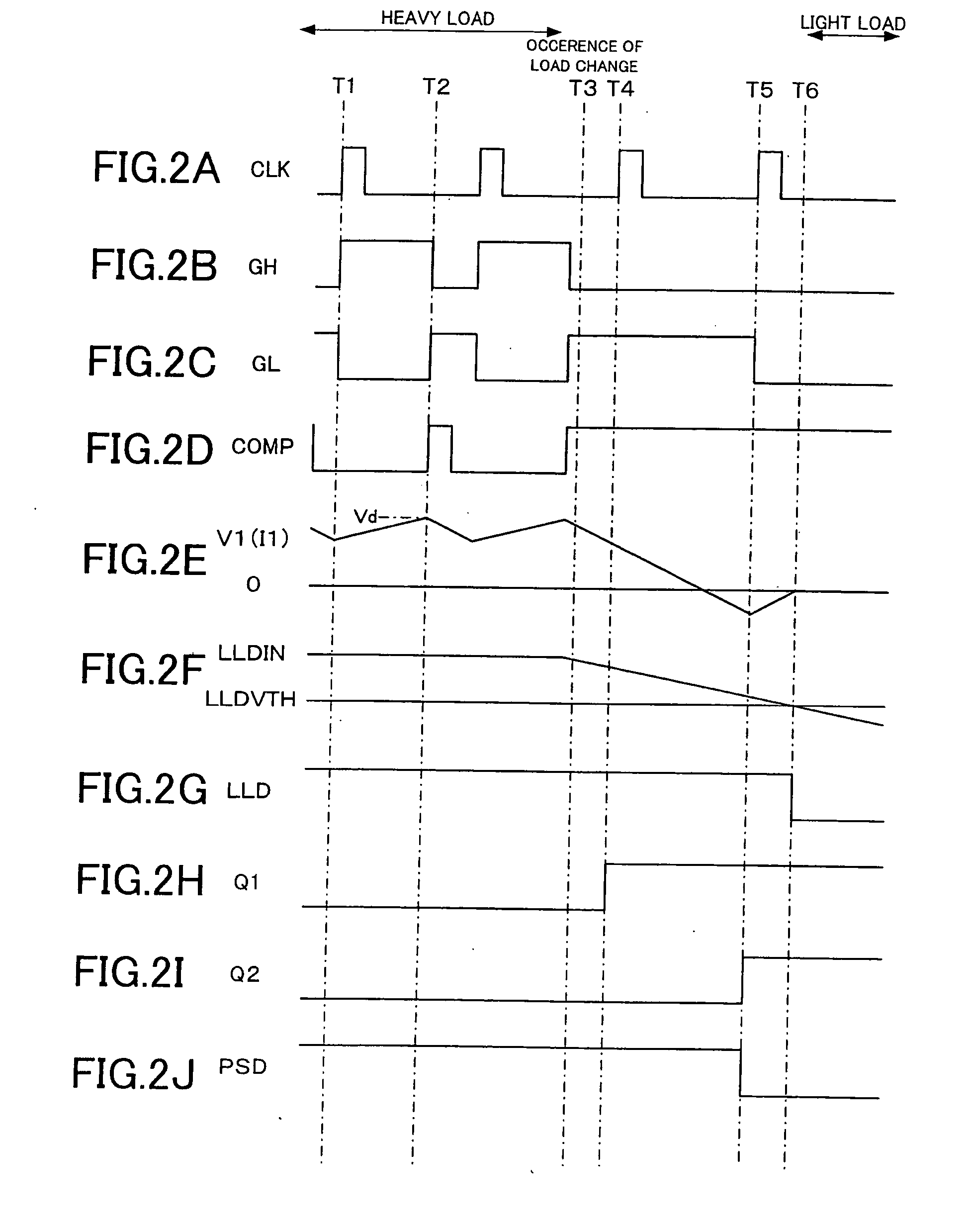DC-DC converter and control method thereof
a converter and control method technology, applied in the direction of dc-dc conversion, power conversion systems, climate sustainability, etc., can solve the problem of not being able to prevent a backward current, and achieve the effect of reducing backward curren
- Summary
- Abstract
- Description
- Claims
- Application Information
AI Technical Summary
Benefits of technology
Problems solved by technology
Method used
Image
Examples
first embodiment
[0064] As shown in FIG. 1, a DC (direct current)-DC (direct current) converter 100 according to the present embodiment comprises a control circuit 10, a comparator 20, a D type flip flop circuit 30 (hereinafter referred to as D-FF 30), a switching circuit 40, a smoothing circuit 50, a light load detecting circuit 60, a pulse skipping detecting circuit 70, a clock circuit 1, a NOT circuit 2, an AND circuit 3, an AND circuit 4, a level shift circuit 5, and a load current detecting circuit 6.
[0065] The control circuit 10 comprises voltage dividing circuits (resistors) R11 and R12, a high-pass capacitor C11, an integrating circuit including an error amplifier 11, a high-pass capacitor C12, a capacitor C13 for integration, and a resistor R13, and a reference power source E11.
[0066] The output terminal Tout of the DC-DC converter 100 is connected to one end of the resistor R11. The other end of the resistor R11 is connected to one end of the resistor R12. The other end of the resistor R...
second embodiment
[0099] According to the first embodiment, the pulse skipping detecting circuit 70 is structured to operate in accordance with the same clock signal as the clock signal CLK supplied to the D-FF 30 (structured to operate synchronously). However, the pulse skipping detecting circuit 70 needs at least to be able to detect that the D-FF 30 maintains a low level signal without outputting the pulse signal, which should originally be output, for some time or longer (or that the D-FF 30 continues to be reset). In other words, the making of the pulse skipping circuit 70 is arbitrary, as long as it can directly or indirectly measure the period during which the outputting of the pulse signal is stopped.
[0100] For example, FIG. 3 shows an example of a DC-DC converter 200, which comprises a D-FF 71, a D-FF 72, and a pulse skipping detecting circuit 70 which operate in synchronization with a clock signal CLK2 independent from the clock signal CLK1 controlling the D-FF 30.
[0101] With this structu...
PUM
 Login to View More
Login to View More Abstract
Description
Claims
Application Information
 Login to View More
Login to View More - R&D
- Intellectual Property
- Life Sciences
- Materials
- Tech Scout
- Unparalleled Data Quality
- Higher Quality Content
- 60% Fewer Hallucinations
Browse by: Latest US Patents, China's latest patents, Technical Efficacy Thesaurus, Application Domain, Technology Topic, Popular Technical Reports.
© 2025 PatSnap. All rights reserved.Legal|Privacy policy|Modern Slavery Act Transparency Statement|Sitemap|About US| Contact US: help@patsnap.com



